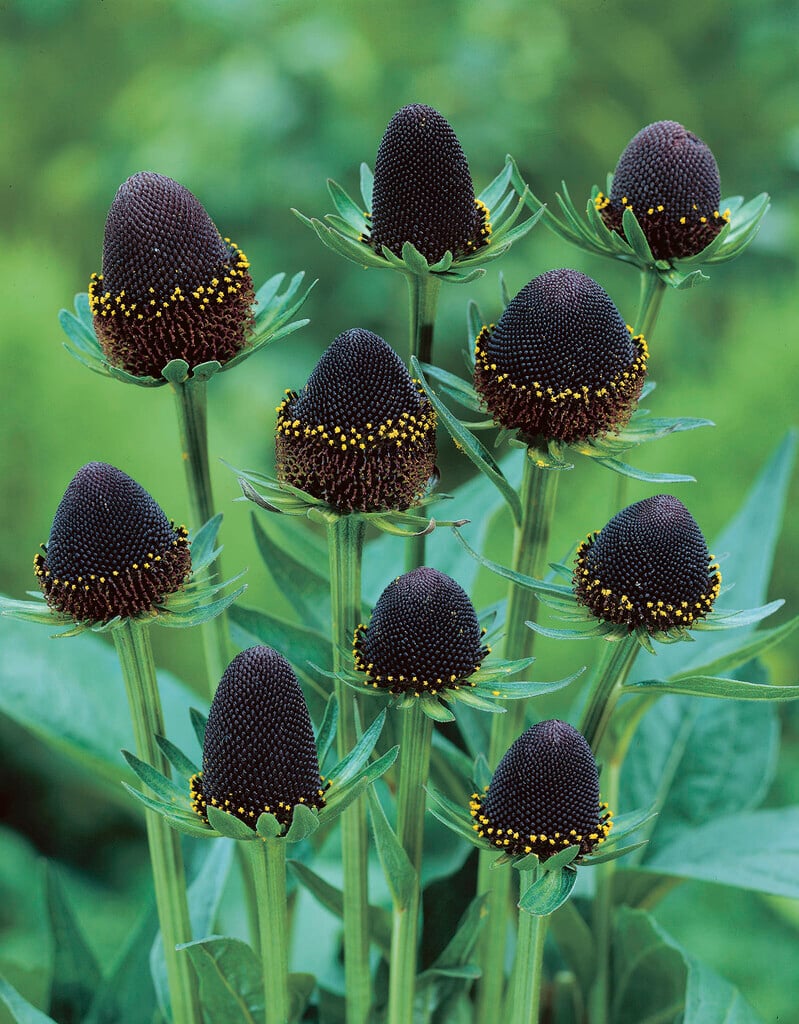Rudbeckia occidentalis
western coneflower
A clump-forming herbaceous perennial, up to 2m high, with oval to lance-shaped green leaves to 30cm long. From mid summer to early autumn, leafy branching stems bear unusual flowers, consisting only of a tall, brown-black cone surrounded by green bracts at the base

Size
Ultimate height
1.5–2.5 metresTime to ultimate height
2–5 yearsUltimate spread
0.5–1 metresGrowing conditions
Moisture
Moist but well–drainedpH
Acid, Alkaline, NeutralColour & scent
| Stem | Flower | Foliage | Fruit | |
| Spring | Green | |||
|---|---|---|---|---|
| Summer | Brown | Green | ||
| Autumn | Brown | Green | ||
| Winter |
Position
- Full sun
- Partial shade
Aspect
South–facing or West–facing
Exposure
Exposed or Sheltered Hardiness
H6Botanical details
- Family
- Asteraceae
- Native to GB / Ireland
- No
- Foliage
- Deciduous
- Habit
- Bushy, Columnar upright
- Genus
Rudbeckia may be annuals, biennials or rhizomatous herbaceous perennials, with simple or pinnately divided leaves and large daisy-like flower-heads with yellow or orange rays surrounding a prominent conical disk
- Name status
Correct
How to grow
Cultivation
Grow in moderately fertile soil that does not dry out. Will tolerate light shade but flowering is best in full sun. Divide every 3-5 years to maintain vigour. See rudbeckia cultivation for more detailed advice
Propagation
Propagate by seed or by division in spring
Suggested planting locations and garden types
- City and courtyard gardens
- Cottage and informal garden
- Prairie planting
- Wildflower meadow
- Wildlife gardens
- Cut flowers
- Flower borders and beds
Pruning
Spent flowering stems may be cut back, or left to provide winter interest
Pests
May be susceptible to aphids, to leaf and bud eelworms, and to slugs on young growth
Diseases
May be susceptible to powdery mildews, especially on dry soils
Get involved
The Royal Horticultural Society is the UK’s leading gardening charity. We aim to enrich everyone’s life through plants, and make the UK a greener and more beautiful place.